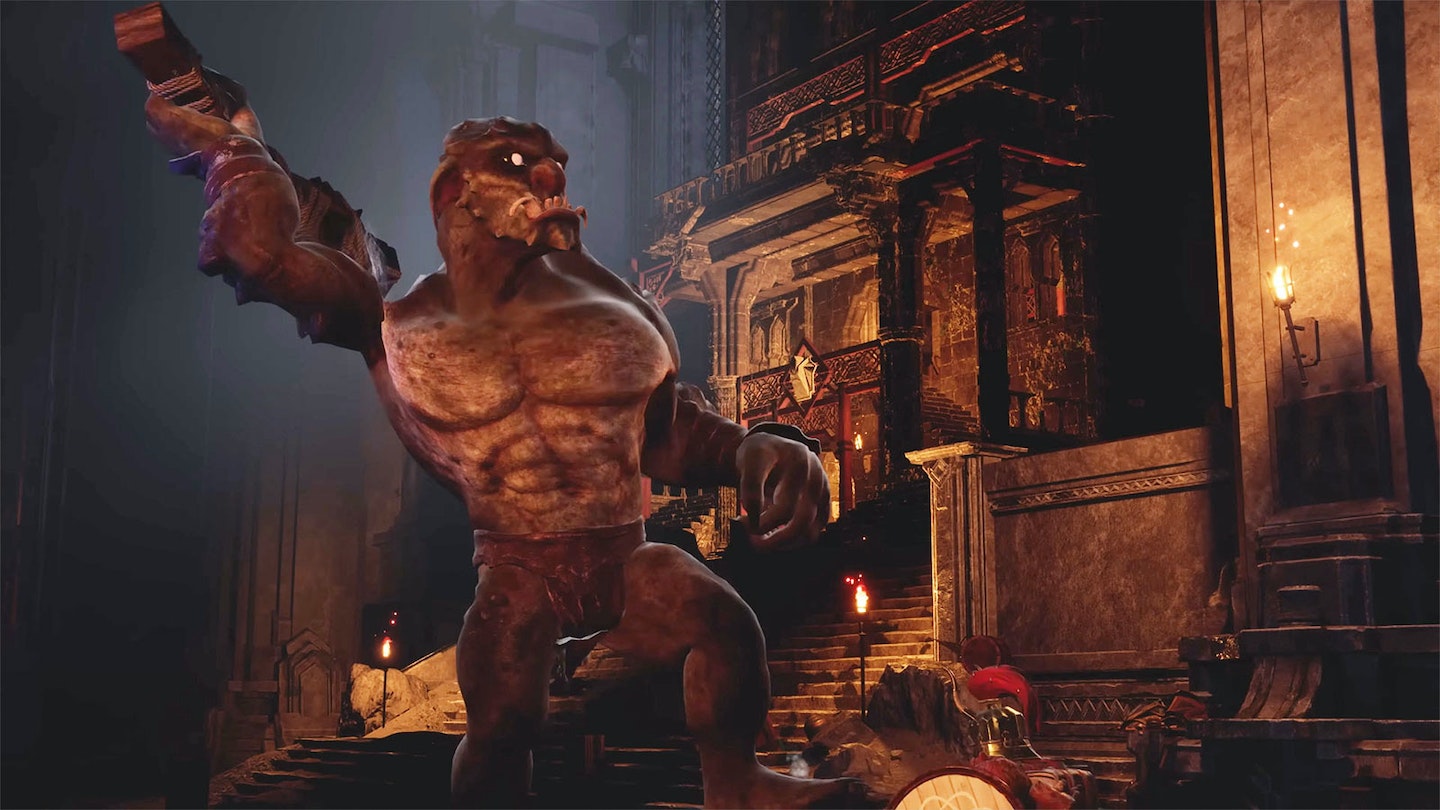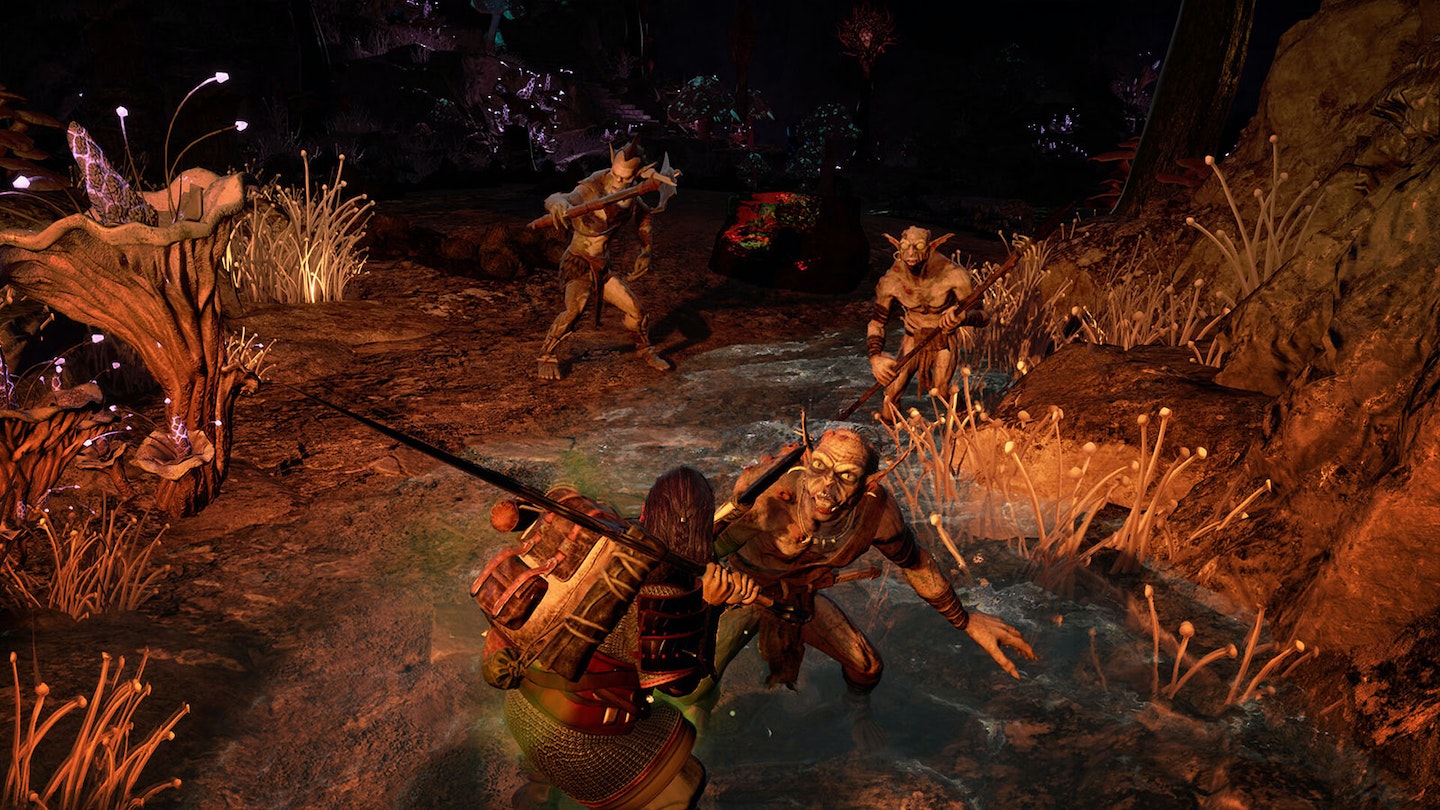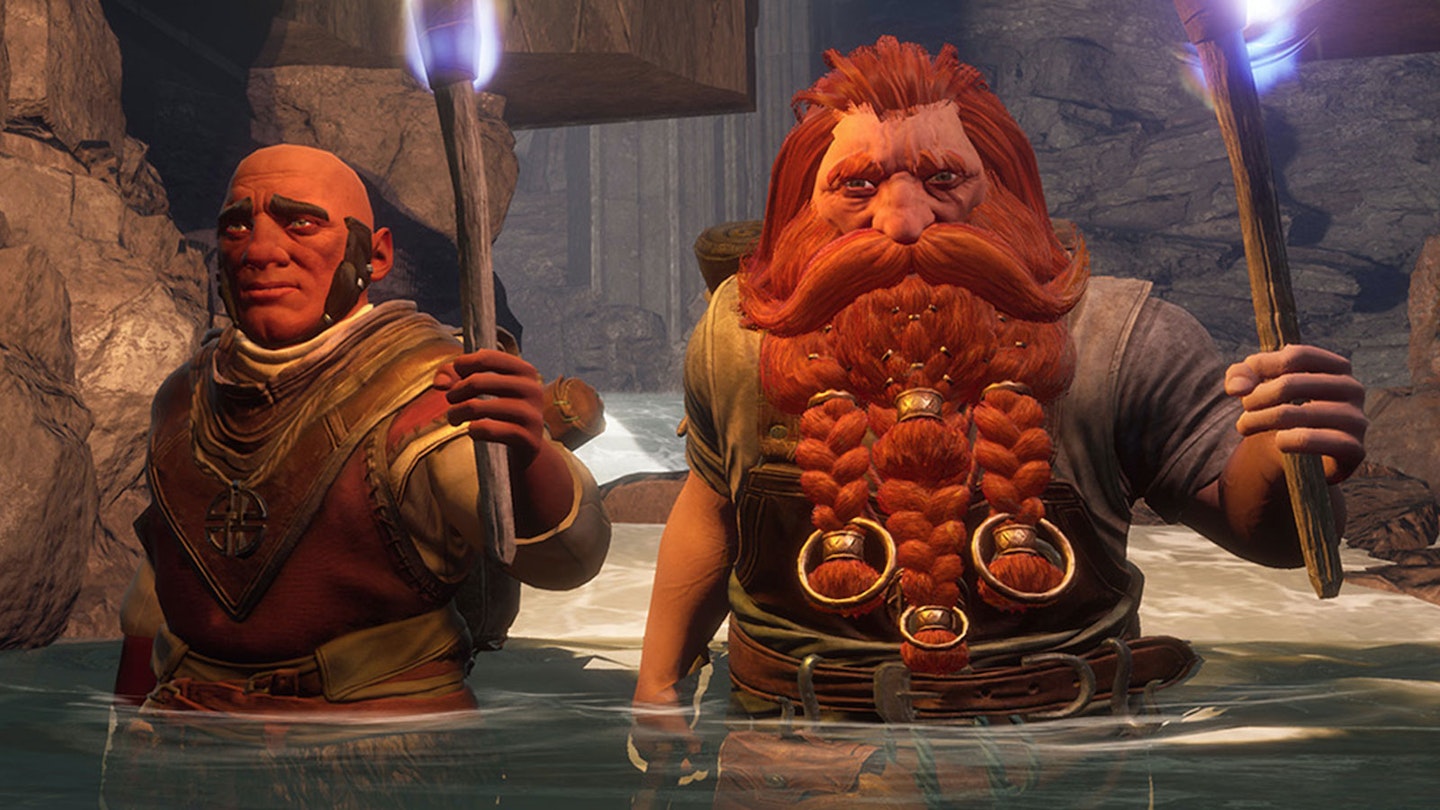Platforms: PC (PS5, Xbox Series X|S to follow)
Fans of The Lord Of The Rings may be feeling pretty bruised when it comes to video game adaptations – after all, the execrable Gollum left a taste worse than Smeagol's rotten fish in players' mouths just five months ago. With Return To Moria seemingly on something of a media blackout ahead of launch, was this going to be another disappointing entry trading purely on the popularity of Tolkien's beloved fantasy world?
Mercifully, no. Narratively, Moria even does some pretty interesting stuff: set after the War of the Ring, in the earliest days of the Fourth Age, it charts the Dwarves' attempts to reclaim their ancestral home of Khazad-dûm, making this one of a rare few spin-offs to explore Middle-earth after Frodo dispatched of his cursed jewellery. However, while the familiar figure of Gimli leads the Dwarven efforts here – with John Rhys-Davies returning to voice his iconic role from the Peter Jackson films – you'll play a custom character trapped underground after an explosive attempt to bypass a stubborn magic gate goes awry.

The character creator is one of the best things about Return To Moria, with an impressive suite of customisation options. Your heroic digger can be tailored to perfection, with countless combinations of skin tones, hair colours and styles, facial designs, and tattoos, all rounded off with an even more splendiferous selection of beards to adorn chins with (sacrilegiously, even beardless is an option).
Unfortunately, it's everything after that point where Moria starts falling down – because mechanically, this is essentially Minecraft with a Tolkien paint job. Now, it's not as though Microsoft's all-conquering sandbox has a monopoly on, well, mining or crafting, but _Moria_hits such specific beats that it's impossible not to draw comparisons, particularly to Minecraft's survival mode.
Unfortunately, Return To Moria's combat is disappointingly basic, a flailing of weapons against mostly unthinking foes.
Initially, your Dwarf will find themselves in near-total darkness, in need of gathering supplies to craft a torch. Then it's a pick-axe, kitbashed together from metal shards and broken wood, to dig further into the depths of the mines, before setting up your first camp, where increasingly complex creations can be crafted or forged. Like Minecraft, Moria drip-feeds new crafting recipes with a steady regularity, each one requiring you venture that much deeper or seek out a slightly rarer resource in order to create marginally better gear, everything kept just slightly out of reach in order to keep you aiming for that next milestone.

While basic items can be crafted on the fly, for anything more advanced, you'll need to build appropriate facilities – forges, refineries, even cooking stations to whip up more nutritious meals to keep your stamina up for longer. Annoyingly though, these facilities have to be crafted at each base camp you set up as you edge further into the mines, which leads to either a great deal of repetitive grinding to build multiple instances, or a hell of a lot of back-and-forth as you march hauls of rare materials to the particular device you need to turn them into something truly useful.
And much as Minecraft's Steve is regularly assailed by zombies while trying to survive, there are plenty of enemies lurking in the shadows of the underdark to make that back-and-forth more treacherous. While Sauron has been defeated by this point, not all of his minions have got the message, and so the mines of Moria are still infested with orcs, wargs, poison-spitting spiders, and more – the high fantasy version of those WW2 soldiers you hear about, shipwrecked on islands for decades, not knowing the conflict is over. Unfortunately, Return To Moria's combat is disappointingly basic, a flailing of weapons against mostly unthinking foes. Short of being swarmed or caught by surprise, there's little threat, just frustration as they impede your exploration.
One big difference that sets Moria apart from Minecraft – although not necessarily for the better – is that it's far more structured. While game worlds are procedurally generated, making each player's experience slightly different between major areas, the ancient walls and corridors of Khazad-dûm can't be broken or mined through no matter how fancy a tool you craft – there's no setting up neat and easy connections between locations. It is, at least, in keeping with the sense of Moria being bewilderingly labyrinthine just as Tolkien imagined, for better or worse.
Ultimately, it's that sense of adherence to the source material that saves Return To Moria from total ignominy. That aforementioned Tolkien paint job is mostly a well presented one, from the architectural and aesthetic touches to the regular helpings of lore to be discovered on the journey. At almost every level, this feels like an authentic foray into Middle-earth – but it's that same adherence that means this is only really going to connect with hardcore Tolkien hounds in the first place.
